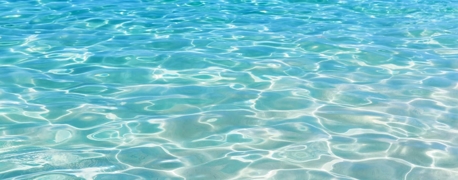Drowning Risks Don’t End for Older Kids & Teens

Ouachita River, Louisiana – A spring evening swim with friends turned fatal when a 15-year-old girl slipped beneath the surface of the Ouachita River in Monroe, Louisiana, on May 21, 2025. The Monroe Police Department (MPD) received a call just before 7:00 p.m., and officers were told upon arrival that the girl had gone under and had not resurfaced. The water in the river was dangerously high and swift at the time.
Lake Havasu, Arizona – An 18-year-old computer science major on a fraternity trip at Lake Havasu, Arizona, drowned after his group’s boat was caught in unexpected crosswinds and three-foot swells on May 17, 2025. A wave knocked him from the vessel, and despite multiple rescue attempts, he was lost. Divers recovered his body the following morning.
Susquehanna River, Pennsylvania – A 10-year-old elementary school student wading with two other children along the shoreline of the Susquehanna River in South Williamsport, Pennsylvania, was swept downstream by the swift current late in the afternoon of May 4, 2025. She was playing upstream from Hepburn Street Dam, a low-head dam notorious for deceptive currents, when she was carried downstream and swept over. Her mother went over the dam as well and was rescued by firefighters about 30 yards downstream, but the girl could not be found. Her body was recovered approximately 30 miles away, near Northumberland, 13 days later.
None of these victims were toddlers splashing in backyard pools. They were older children and teens—good swimmers by family accounts—who entered the water and never came home. Sadly, their stories are typical of U.S. drowning statistics.
Drowning Is the Second-Leading Cause of Death for Children Aged 5-14
Most parents picture young children when they think of drowning dangers, but the data tells a different story. According to nationwide drowning data presented by the Centers for Disease Control and Prevention (CDC), drowning is the second-leading cause of unintentional death among children aged 5 to 14. In 2022, the CDC recorded nearly 700 fatal drownings among 10- to 19-year-olds, roughly two each day.
Here, we take a closer look at why older kids and teenagers remain highly vulnerable, especially in open water, and what can be done to reduce the risk of drowning.
Open Water vs. Pools: Changing Drowning Risks for Older Children
CDC data show that teenagers aged 15 to 19 have the third-highest unintentional drowning death rate in the United States, but they eclipse younger children in open water fatalities. According to the American Red Cross, 87% of drowning fatalities involving children under 5 occur at home, but children 5 and older, including teens, have a higher risk of drowning in natural bodies of water, such as lakes, rivers, and ponds.
The environment—and the behavior it invites—explains why adolescent risk looks so different.
What Makes Natural Bodies of Water So Dangerous for Teens?
As children grow, their playground expands from supervised pools and parks to unsupervised visits to local rivers, reservoirs, and coastal bays. These natural bodies of water bring fast currents, drop-offs, submerged debris, and boat traffic—hazards that overwhelm even strong swimmers. Cold water, sudden weather changes, and the long swims needed to reach shore add fatigue.
The result: teens are five times more likely to drown in natural water than in pools, and they are three times more likely to drown in natural water than children aged 5 to 9.
According to a 2016 Water Safety Study by Safe Kids Worldwide, the three most likely places for natural water drownings involving children and adolescents between 2005 and 2014 were lakes (38%), rivers (24%), and ponds (20%). Older children and teens aged 10-17 are more likely to drown in lakes and rivers, while younger children are more likely to drown in ponds.
The American Academy of Pediatrics warns parents that the drowning risk rises for teens for several key reasons:
- Overconfidence & “I’ve Got This” Culture: Developmental studies show adolescents routinely overestimate physical skill and underestimate danger. Add in their still-developing impulse control, and you have situations where preteens and teenagers are more likely to place themselves in risky situations.
- Peer Pressure & Risk-Taking: Functional MRI research confirms teens’ reward centers fire more intensely in front of friends, and they will often take risks they avoid when alone. Around the water, that social push can translate to cliff jumping, night swimming, and ditching life jackets.
- Alcohol & Substance Use: Alcohol is a common factor in adolescent and adult drowning deaths. Even small amounts of alcohol slow reaction time, impair judgment, and accelerate hypothermia. Cannabis and other substances show similar effects.
Teens are also more likely to be unsupervised and underequipped for water safety. Unlike toddlers, older kids swim without adults present. Coast Guard incident files reveal that 88 % of teens who died in recreational-boating drownings were not wearing a life jacket (CDC). Many families retire flotation devices once swim lessons end; teens refuse them because they “trust their skills.”
Can’t Older Kids Swim?
One might think that older children and teens would be at a significantly lower risk of drowning due to swimming ability, but Safe Kids Worldwide’s 2016 Water Safety Study proves otherwise. According to the organization’s analysis of drowning data from the CDC, nearly half of all 10- to 17-year-olds who fatally drowned in pools between 2005 and 2014 reportedly knew how to swim.
The disparity in reported swimming ability and drowning can be seen below:

Lack of swimming ability is an issue seen across all age groups in the United States and worldwide. Nearly 40 million American adults do not know how to swim, and more than half have never taken swimming lessons. Even when a child is older or “knows how to swim,” basic precautions must be taken to keep them safe in the water.
The Drowning Gender Gap: Older Boys at a Higher Risk
Across all ages, males account for nearly 80% of drowning fatalities. Among adolescents, the drowning rate is four to eight times higher for boys than girls. This risk tends to dip and then spike in teenage years. According to an analysis of CDC data by the National Drowning Prevention Alliance (NDPA), the drowning rate for males at age 15 nearly triples.
Keeping Older Kids Safe Near Water
By middle school, many kids feel (and often look) like confident swimmers—but confidence can hide real risk. The American Academy of Pediatrics reminds families that drowning prevention is a “layers of protection” effort, even for strong, older swimmers:
Build Skills Early & Keep Practicing
Enroll tweens and teens in age-appropriate swim lessons or even lifeguard prep courses. Skills such as treading water for five minutes, floating while signaling for help, and swimming 50 yards without stopping should be refreshed every year.
Supervision Still Matters
Knowing how to swim does not “drown-proof” anyone. Most adolescent drownings occur when no capable adult is watching. Choose guarded beaches or pools, insist on the buddy system, and designate a “water watcher” who refrains from phones and alcohol.
Feet-First the First Time
Before the first dive or cannonball, kids should wade in feet-first to confirm depth, temperature, and hidden hazards. One ill-placed headfirst dive into shallow water or an obstacle like a rock or reef can cause a lifelong spinal injury.
Respect Open Water
Lakes, rivers, and ocean inlets have currents, drop-offs, and boat traffic. Tell teens to swim only in posted areas, stay well clear of dams, and exit immediately if they feel chilled, fatigued, or swept by a current.
Life Jackets on Every Craft
U.S. Coast Guard–approved life jackets are non-negotiable for kayaking, jet skiing, wakeboarding, or just riding in a friend’s boat. Adults should wear them too—role modeling vastly increases teen compliance.
Sober Water, Smart Choices
Alcohol and drugs impair judgment, slow reflexes, and accelerate hypothermia. A straightforward talk framed around protecting friends as well as themselves goes further than lecturing.
Cold Weather & Ice Hazards
In winter, warn against walking, skating, or snowmobiling on rivers, ponds, or retention basins unless ice depth has been officially verified. Even in the spring, runoff-fed currents can overpower experienced swimmers.
Be Rescue Ready
Parents, caregivers, coaches, and teens should learn CPR and how to “Reach or Throw, Don’t Go” when someone is in trouble. Quick bystander action is often the difference between a close call and a tragedy.
These common-sense layers—skills, supervision, safe environments, and respect for water—can give older kids the freedom they crave without the risks that claim hundreds of young lives each year.


